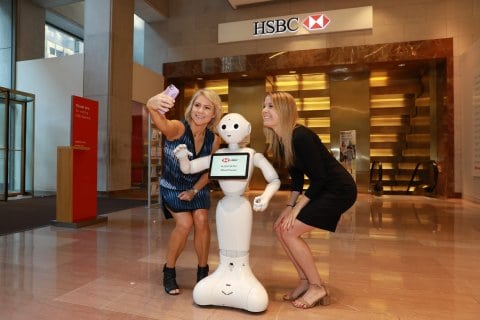
If you didn’t catch the big news of yesterday, it was the first public firing of a robot. In this case, a bank’s chatbot, Amelia. Amelia was launched last year by Swedish bank Nordnet, with the aim of speeding up customer onboarding and improving customer satisfaction. Apparently, she achieved neither and so was sacked for underperformance.
It’s interesting as the software behind Ameila, IPSoft, is an award-winning artificial intelligence (AI) engine that is also used by Swedish bank SEB. In tehri case, they got an award for their deployment and the nuances of Amelia’s sacking in Nordnet implies they didn’t train her properly. As Business Insider points out:
IPSoft states that Amelia requires extensive teaching from its partners. If the voice-tech enabled assistant “is unable to resolve an issue”, she will “escalate the task to a human colleague” and then observe and learn from it.
Did the bank teach her properly?
It’s intriguing from my side as I recently sat on a judging panel for the use of AI in banks. There were many entries from around the world, and I got excited at the prospect of learning something new. Instead, I learnt little as nearly every entry was a chatbot.
Our chatbot did this. Our chatbot did that. Our chatbot reduced contact centre contact. Our chatbot avoided human contact.
Now I do have several excellent examples of how big banks are using AI, as discussed recently in the context of best execution at JPMorgan Chase, but I don’t think of chatbots as being particularly amazing. Sure, natural language interfaces, text-to-speech and speech-to-text are all technologies coagulating together to improve and automate service, but the issue I have is that a banks’ deployment of AI chatbots is rarely about improving service but focused upon cutting costs.
Equally, I see a lot more deployment of robots in branches, that seem to be doing the same thing and are also a good gimmick. For example, HSBC has deployed Pepper the Robot in New York.
“The investment is intended to bring foot traffic and new business to the firm's flagship New York location on Fifth Avenue, and improve the branch experience for customers … the expense of the investment, which HSBC declined to disclose, has already been recouped by new business coming into the bank.”
Interestingly, Pepper has been used in branches since 2015 in Japan, so it takes a while to come West.
Meantime, I just wonder whether these early takes on robotics and AI are too crude to see the long-term vision where almost human avatars provide video services to the masses whilst incredibly intelligent AI engines mine customer data to provide advice, service and sales. Sure, we can add a chatbot front-end to our online ops and a robot in a branch, but how integrated are these with the core data systems and engines of customer knowledge? I think not. That is where the gold will be, as I keep writing:
- How new banks differ to traditional banks
- The difference between FinTech and TechFin
- Banks are losing the data war
- What does the future bank look like?
In other words, chatbots and robots in branches are nice-to-haves, but if you’re not addressing the core question of a single view of the customer through an enterprise data architecture, then you’re never going to get the future AI opportunities.
Meantime, be careful how we treat our robots as they may reflect the human dark side. Remember Microsoft’s AI chatbot that became a racist? Equally, as we push the robots around, I do wonder whether one day Skynet will arrive, and we will be on the receiving end …
Chris M Skinner
Chris Skinner is best known as an independent commentator on the financial markets through his blog, TheFinanser.com, as author of the bestselling book Digital Bank, and Chair of the European networking forum the Financial Services Club. He has been voted one of the most influential people in banking by The Financial Brand (as well as one of the best blogs), a FinTech Titan (Next Bank), one of the Fintech Leaders you need to follow (City AM, Deluxe and Jax Finance), as well as one of the Top 40 most influential people in financial technology by the Wall Street Journal's Financial News. To learn more click here...


